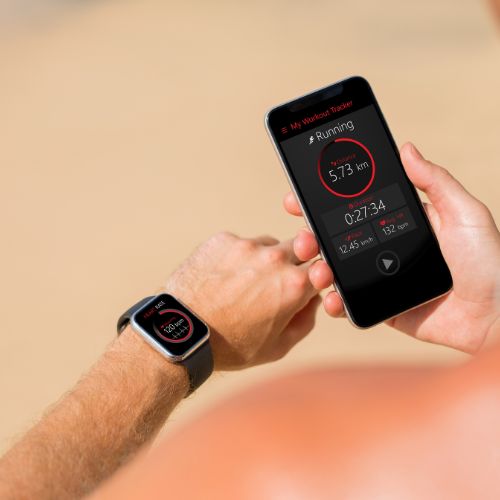
How Wearable Tech is Shaping the Future of Personal Safety: A Step-by-Step Guide
Wearable technology is not only revolutionizing healthcare and fitness but is also making significant strides in personal safety. From smartwatches with emergency alert features to wearable cameras that capture real-time footage, these devices are helping individuals feel more secure in their daily lives. In this guide, we explore how wearable tech is shaping the future of personal safety, the types of devices available, and practical advice for using them to enhance your protection.
The Rise of Wearable Technology for Personal Safety
Wearable technology for personal safety includes a range of devices designed to help users alert authorities, share their location, or capture evidence during emergencies. These devices, which can be worn on the wrist, clipped onto clothing, or integrated into jewelry, are becoming increasingly popular for their ability to provide discreet, instant access to help.
Key Functions of Wearable Safety Devices
1. Emergency Alerts and Panic Buttons
Many wearable devices are equipped with emergency alert functions that allow users to send distress signals to designated contacts or emergency services with a simple push of a button. These panic buttons can be found on smartwatches, keychain devices, or even specialized safety bracelets. Once activated, the device can send your location and a pre-programmed message, ensuring that help is notified as quickly as possible.
2. GPS Tracking and Location Sharing
Wearables with GPS tracking provide real-time location sharing, which can be crucial during emergencies. Parents can use these devices to track their children, while individuals traveling alone can share their location with trusted contacts. If a user goes missing or finds themselves in a dangerous situation, the GPS data can be invaluable in locating them quickly.
3. Wearable Cameras for Evidence Collection
Devices like body-worn cameras or smart glasses can record audio and video footage in real-time. This feature is especially beneficial for those who might face threats or harassment, as it provides a means of collecting evidence that can later be used in investigations or legal proceedings.
Types of Wearable Devices for Personal Safety
1. Smartwatches
Many smartwatches, such as Apple Watch and Samsung Galaxy Watch, have built-in emergency features like SOS buttons, fall detection, and location tracking. They can automatically contact emergency services or pre-set contacts when the user experiences a fall or presses an SOS button, providing both location and a direct line of communication.
2. Wearable Panic Buttons
Devices like Safelet or Invisawear are small, discreet panic buttons designed to be worn as jewelry or accessories. These devices connect to a smartphone app and allow users to send emergency alerts and their GPS location to contacts with a quick, subtle touch.
3. Wearable Cameras
Wearable cameras such as GoPro or body cams offer continuous recording that can be worn in situations where personal safety may be a concern. Law enforcement officers and security personnel often use these, but civilians can also benefit from this technology for personal documentation or security purposes.
4. Personal Alarm Wearables
Personal alarms, such as KATANA Safety Arc or Ripple, are wearables designed to emit a loud sound when triggered, deterring attackers and alerting those nearby. They can also send emergency alerts to contacts, providing dual layers of protection.
Benefits of Wearable Technology for Personal Safety
1. Immediate Access to Help
Wearable safety devices allow users to quickly reach out for help without needing to unlock their phones or use other cumbersome methods. With a simple tap or press, wearables can notify emergency services or personal contacts, significantly reducing response times.
2. Discreet Protection
Many wearable devices are designed to be subtle and look like everyday accessories, such as necklaces or bracelets. This allows users to maintain a sense of normalcy while still having a safety device within reach. The discreet nature of these devices can also help avoid escalating dangerous situations by not alerting potential attackers that help is being called.
3. Enhanced Confidence and Independence
For vulnerable individuals such as children, elderly adults, or those with disabilities, wearable safety tech provides a sense of independence while ensuring their safety is prioritized. The knowledge that they can summon help with a single touch boosts their confidence in moving around independently.
Practical Advice for Using Wearable Safety Tech
1. Choose a Device That Matches Your Lifestyle
When selecting a wearable safety device, consider your daily activities and needs. For example, a smartwatch with emergency features might be ideal if you’re often on the go, while a discreet panic button could suit someone who needs subtle protection in social situations. Choose a device that you feel comfortable using and wearing regularly.
2. Regularly Update Device Settings
Ensure that your device’s emergency contacts, messages, and location-sharing settings are up to date. Many wearable devices allow you to change the contacts who will receive alerts, so make sure that the right people can be notified in an emergency.
3. Test Your Device
Familiarize yourself with how the device works by testing it periodically. Understand how to trigger an emergency alert, how the location-sharing features operate, and how to access any recorded data from wearable cameras. Being familiar with these processes can be crucial in high-stress situations.
Future Trends in Wearable Safety Technology
The future of wearable safety tech is closely tied to advancements in artificial intelligence (AI) and machine learning. These technologies will allow wearables to detect anomalies in behavior or environmental conditions, potentially predicting dangerous situations before they occur. Additionally, improvements in battery life, GPS accuracy, and integration with smart home security systems will make wearable safety devices even more effective and accessible.






